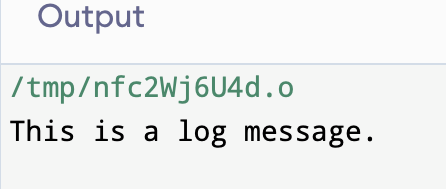C++ Tutorial
C++ Control Statement
C++ Functions
C++ Arrays
C++ Pointers
C++ Object Class
C++ Inheritance
C++ Polymorphism
C++ Abstraction
C++ Namespaces
C++ Strings
C++ Exceptions
C++ Templates
Signal Handling
C++ File & Stream
C++ Misc
C++ STL Tutorial
C++ Iterators
C++ Programs
MCQ
Interview Question
Difference between cerr and clog in C++The cerr and clog are both stream objects in C++ that are connected to the standard error device, and their actions differ slightly. The ostream class contains the objects cerr and clog, which are used to output error messages and other diagnostic data to the standard error stream. In this article, you will learn about the difference between cerr and clog in C++. But before discussing these differences, you must know about the cerr and clog in C++. What is the cerr (Standard Error Stream)?The cerr stands for "character error" which represents the "standard error stream". It is an ostream class instance that is automatically connected to the console, the standard error device. Cerr's primary feature is its unbuffered nature. It is significant in the context of error messages because the output sent to cerr is flushed instantly. It ensures that error messages are shown immediately, even during an unexpected program termination. Example:Let us take an example to illustrate the use of the cerr function in C++. Output: 
What is the clog (Standard Logging Stream)?The "clog" stands for "character logging", which represents the "Standard error stream". It is similar to cerr, clog is linked to the standard error device and is an instance of the ostream class. But unlike cerr, clog is buffered, meaning that it is kept in a buffer instead of flushing the output right away. The buffer is flushed under some circumstances, such as a normal program exit. Example:Let us take an example to illustrate the use of the clog function in C++. Output: 
Main Difference between Cerr and Clog:
There are several main differences between the Cerr and Clog in C++. Some main differences between the Cerr and Clog are as follows:
Conclusion:Both cerr and clog can be helpful in practice; which one you use will depend on your program's requirements and the importance of the data you are sending to the standard error stream. |
 For Videos Join Our Youtube Channel: Join Now
For Videos Join Our Youtube Channel: Join Now
Feedback
- Send your Feedback to [email protected]
Help Others, Please Share










